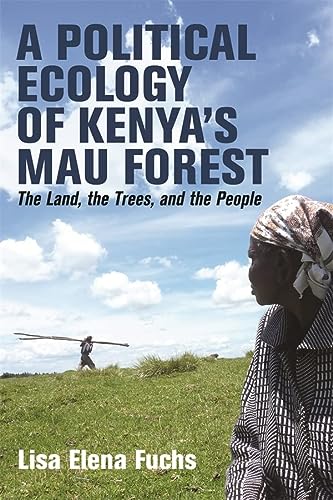

Most ebook files are in PDF format, so you can easily read them using various software such as Foxit Reader or directly on the Google Chrome browser.
Some ebook files are released by publishers in other formats such as .awz, .mobi, .epub, .fb2, etc. You may need to install specific software to read these formats on mobile/PC, such as Calibre.
Please read the tutorial at this link: https://ebookbell.com/faq
We offer FREE conversion to the popular formats you request; however, this may take some time. Therefore, right after payment, please email us, and we will try to provide the service as quickly as possible.
For some exceptional file formats or broken links (if any), please refrain from opening any disputes. Instead, email us first, and we will try to assist within a maximum of 6 hours.
EbookBell Team

4.8
74 reviewsThe eastern part of the Mau Forest, the most important closed-canopy forest in East Africa, has come under severe threat since the 1990s. In this political ecology Lisa Fuchs exploring the failure of the government-led forest restoration and rehabilitation initiative to 'Save the Mau', launched in 2009, the author examines two of the most contentious issues in Kenya since colonial times: land and the environment. She sheds light on the structural factors and the role of individuals in the forest's destruction and of non-protection and traces the colonial legacy of post-independent environmental conservation policies and practices. In doing so, Fuchs demonstrates that the Mau crisis is more than an environmental crisis: it is also a political, an economic, and a socio-cultural crisis.
Though a detailed empirical analysis, the author shows that the 'Mau crisis' led to the near collapse of landscapes and livelihoods in the Mau Forest ecosystem. She traces the implementation of insufficient conservation programmes, which resulted from historical path-dependency and the adoption of global environmental governance blueprints, forest allocation and benefits, and exposes a forest management system that prioritises commercial forest production over biodiversity conservation. Access and entitlements to the highly fertile forest land, and the amalgamation of forest rehabilitation with the reclamation of grabbed public forest are emphasised as a further core contributor to the crisis. The socio-cultural dynamics within and among various forest-dwelling communities, including the indigenous hunting and gathering Ogiek and 'in-migrant' groups, are also analysed. The book highlights that local types of environmentalism are caught between the 'invention of traditions' and 'perverse
…